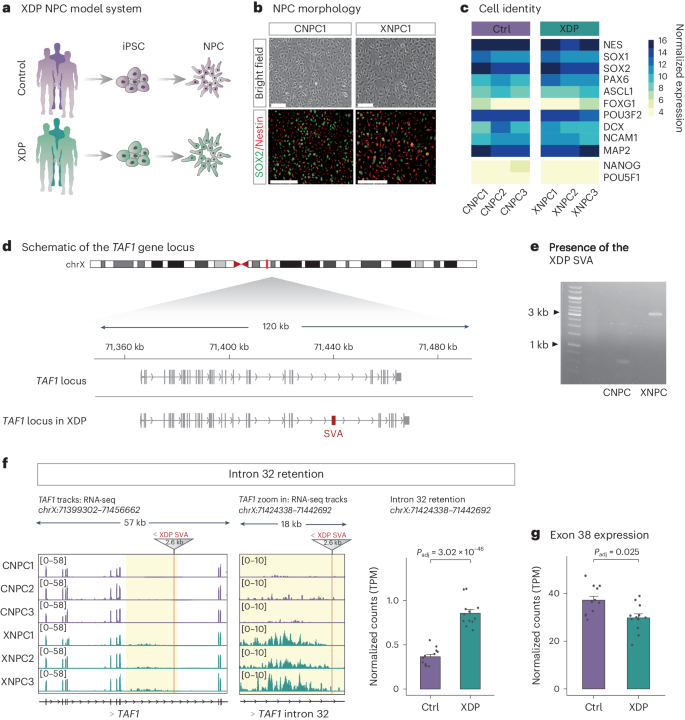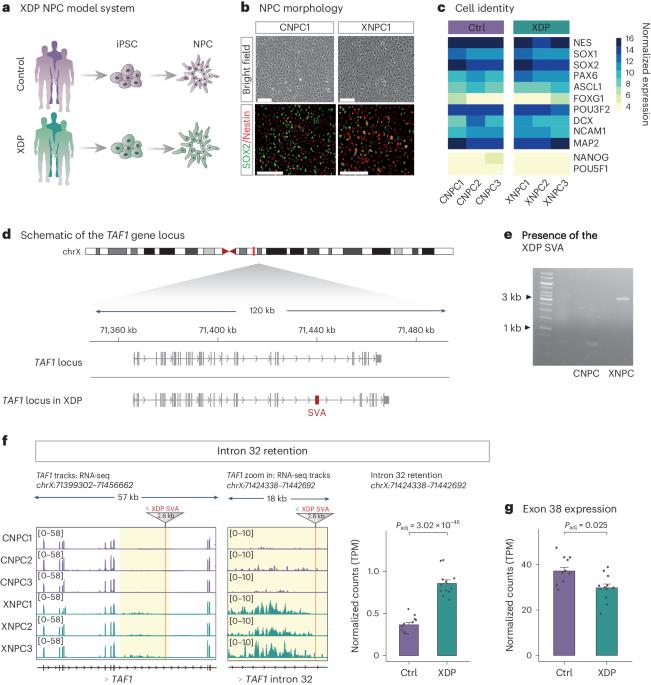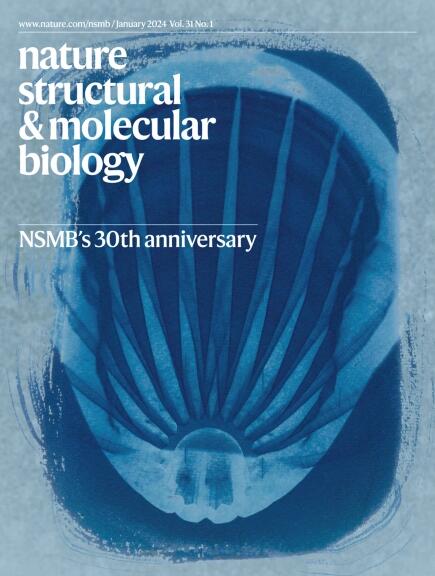Mini-heterochromatin domains constrain the cis-regulatory impact of SVA transposons in human brain development and disease
IF 12.5
1区 生物学
Q1 BIOCHEMISTRY & MOLECULAR BIOLOGY
引用次数: 0
Abstract
SVA (SINE (short interspersed nuclear element)–VNTR (variable number of tandem repeats)–Alu) retrotransposons remain active in humans and contribute to individual genetic variation. Polymorphic SVA alleles harbor gene regulatory potential and can cause genetic disease. However, how SVA insertions are controlled and functionally impact human disease is unknown. Here we dissect the epigenetic regulation and influence of SVAs in cellular models of X-linked dystonia parkinsonism (XDP), a neurodegenerative disorder caused by an SVA insertion at the TAF1 locus. We demonstrate that the KRAB zinc finger protein ZNF91 establishes H3K9me3 and DNA methylation over SVAs, including polymorphic alleles, in human neural progenitor cells. The resulting mini-heterochromatin domains attenuate the cis-regulatory impact of SVAs. This is critical for XDP pathology; removal of local heterochromatin severely aggravates the XDP molecular phenotype, resulting in increased TAF1 intron retention and reduced expression. Our results provide unique mechanistic insights into how human polymorphic transposon insertions are recognized and how their regulatory impact is constrained by an innate epigenetic defense system. Here the authors elucidate how epigenetic regulation influences the regulatory impact of transposable elements in the human genome using cellular models of the neurodegenerative disease XDP, which is caused by an SVA insertion at the TAF1 locus.


微型异染色质结构域限制了 SVA 转座子在人类大脑发育和疾病中的顺式调控影响
SVA(SINE(短穿插核元素)-VNTR(可变串联重复序列)-Alu)反转座子在人类中依然活跃,并导致个体遗传变异。多态的 SVA 等位基因具有基因调控潜能,可导致遗传疾病。然而,SVA插入如何受控并对人类疾病产生功能性影响尚不清楚。在这里,我们对 X 连锁肌张力障碍性帕金森病(XDP)细胞模型中 SVA 的表观遗传调控和影响进行了剖析,这是一种由 TAF1 基因座上的 SVA 插入引起的神经退行性疾病。我们证明了 KRAB 锌指蛋白 ZNF91 能在人类神经祖细胞中的 SVA(包括多态等位基因)上建立 H3K9me3 和 DNA 甲基化。由此产生的微型异染色质域减弱了 SVA 的顺式调控影响。这对 XDP 病理学至关重要;去除局部异染色质会严重加剧 XDP 分子表型,导致 TAF1 内含子保留增加和表达减少。我们的研究结果为人类多态转座子插入如何被识别以及它们的调控影响如何被先天表观遗传防御系统所限制提供了独特的机理见解。
本文章由计算机程序翻译,如有差异,请以英文原文为准。
求助全文
约1分钟内获得全文
求助全文
来源期刊

Nature Structural & Molecular Biology
BIOCHEMISTRY & MOLECULAR BIOLOGY-BIOPHYSICS
CiteScore
22.00
自引率
1.80%
发文量
160
审稿时长
3-8 weeks
期刊介绍:
Nature Structural & Molecular Biology is a comprehensive platform that combines structural and molecular research. Our journal focuses on exploring the functional and mechanistic aspects of biological processes, emphasizing how molecular components collaborate to achieve a particular function. While structural data can shed light on these insights, our publication does not require them as a prerequisite.
 求助内容:
求助内容: 应助结果提醒方式:
应助结果提醒方式:


